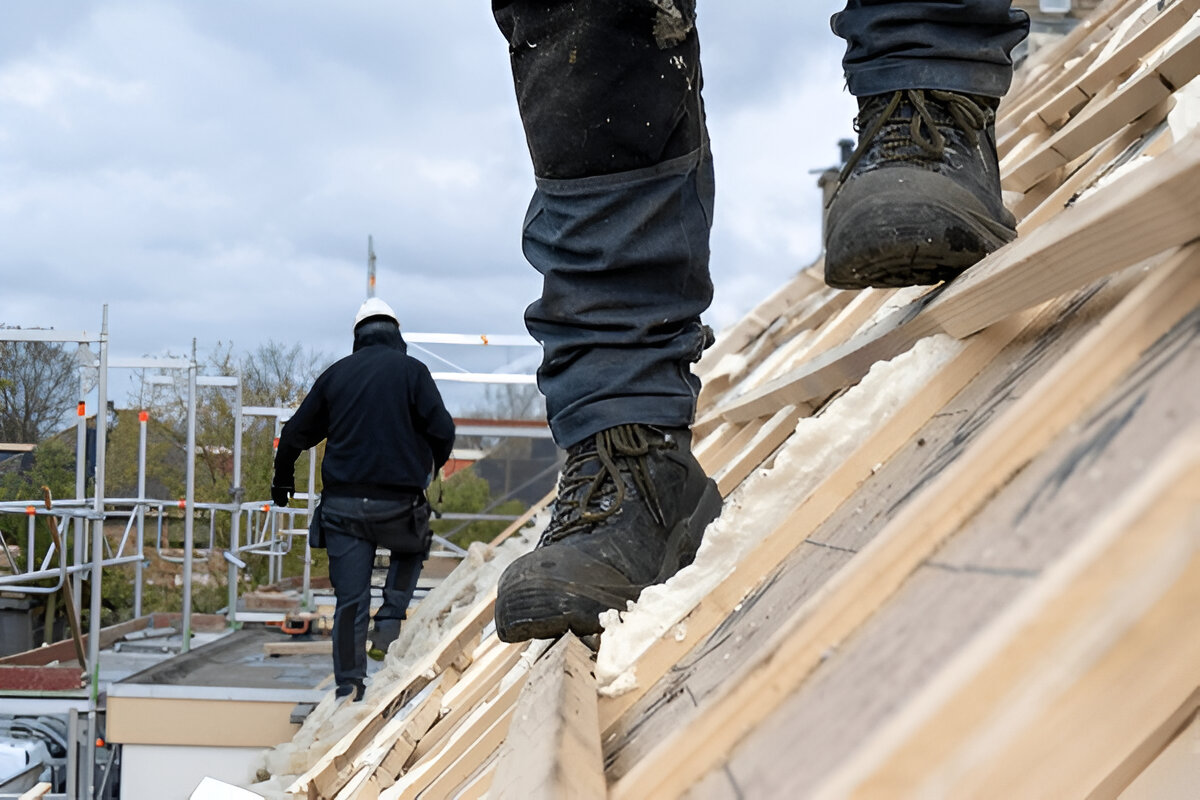Small roof problems don’t just pop up overnight—they usually start with little hints that, if brushed off, can snowball into huge, pricey fixes. Roofers say most roofs “speak up” with small warnings long before you see major damage. Catching these signs early not only saves the house itself but also keeps your wallet from taking a hit.
The best way to stay ahead is to pay attention. Simple things like peeking at ceilings for water spots or giving shingles a once-over after storms can make all the difference. The roofing contractor Lakewood also points out that steady maintenance stretches the life of roofing materials big time. Ignoring small stuff makes shingles and beams break down faster. A homeowner who learns the warning signs can plan small, targeted fixes instead of waiting for a total breakdown—which is way more stressful and expensive.
Stains and Streaks Indoors: Roofing Contractor Lakewood
Brown spots on ceilings may seem harmless, but they usually signal water sneaking in where it shouldn’t. That water can soak insulation and weaken drywall, meaning the stain you see might be the tip of the iceberg. Roofers say to always check around chimneys, skylights, and vents since leaks often start there. Fixing it now is much cheaper than dealing with mold later.
Moisture trapped in walls or ceilings also ruins insulation, makes the house smell, and sparks mold that spreads fast through vents. Even a tiny attic leak can drip for months before you spot a stain. That’s why pros say to treat any discoloration like an urgent warning, not just an ugly mark. A quick patch job now saves you from replacing whole ceilings later. Checking during rainy seasons helps you catch these issues early.
Shingles That Look Odd
Shingles that curl, go missing, or look uneven are red flags. Even one missing shingle can throw the whole system off, kind of like a puzzle missing a piece. The construction company Lakewood says spotting these problems early makes repairs simple instead of costly. You don’t even need to climb up—binoculars work fine after storms, and discolored patches show where shingles are breaking down.
Shingle wear usually comes from the sun, wind, or bad installation. When they curl, rain sneaks under and damages deeper layers. Roofers suggest checking shady parts of the roof, too, since dampness there causes warping. Another sign is when shingles lose their rough texture and feel smooth, meaning they’ve lost their protective coat.
Granules Piling Up in Gutters
Your gutters can tell a lot about your roof’s health. Finding little black granules in there means shingles are wearing out. These granules protect shingles from the sun, and losing them speeds up roof aging. Catching this early lets you call in help from a roofing contractor Lakewood before shingles totally fail. Cleaning gutters seasonally doubles as a free inspection.
Clogged gutters are bad, too, since they trap water that seeps back into the roof. Roofers say to check downspouts as well, since granules often pile there. If left, UV rays break shingles down, making them crack and leak. Over time, entire sections may fail early. Just cleaning and checking gutters each season not only shows roof wear but also keeps water from wrecking siding and fascia.
Sagging and Uneven Rooflines
A roof should look straight across. Any dips mean stress in the structure, usually from water damage or weak beams. Sagging isn’t just ugly—it’s serious. Roofers recommend calling for an inspection right away if you notice it, since ignoring it can lead to a full roof replacement. Checking from different angles outside helps spot dips you might miss head-on.
Sagging often happens because wood soaked up water over time, snow weighed too much, or the beams were never strong enough. Sometimes it’s even from sloppy construction. Quick fixes might mean reinforcing beams or replacing plywood instead of rebuilding the whole frame. Catching sagging early saves thousands and keeps your roof strong.
Flashing That’s Falling Apart
Flashing—the metal around chimneys, vents, and skylights—acts like a guardrail against leaks. Cracks, rust, or gaps in flashing let water straight in. Even small damage here needs attention fast, since these spots are prime leak points. Roofers suggest flashlight checks in attics near these areas to catch trouble early.
Bad flashing is a top cause of stubborn leaks, especially in heavy rain or melting snow. It’s not always visible either—bad sealing can be just as risky. Seasonal inspections often show caulking peeling, rust forming, or metal pulling loose. Skipping flashing repairs usually means paying for repeated drywall fixes inside. Luckily, resealing or replacing flashing is a fairly cheap way to keep your roof sealed tight.
Moss and Algae Taking Over
That green fuzz on a roof might look harmless, but moss traps moisture that wears down shingles. It grows fast in shady, damp spots and speeds up damage. Removing it quickly and trimming trees to let in sunlight are the best defenses. Doing so can add years to your roof’s life.
Moss also physically lifts shingles as they spread, letting water slip underneath. Algae isn’t as aggressive, but it still weakens shingles and makes the roof look bad. The construction company Lakewood often suggests safe chemical washes followed by sprays that stop regrowth. Improving attic ventilation and keeping trees cut back also keeps things dry enough to prevent moss. Acting early keeps both your roof’s health and curb appeal strong.
Daylight in the Attic
One of the easiest checks is in the attic—if you see sunlight coming through, that’s a problem. It means gaps that can let in water, pests, or drafts. Damp insulation or cold breezes are also signs. Checking every season helps spot weak spots before they turn into disasters.
Attic checks by hiring a roofing contractor Lakewood show more than just light—they can reveal sagging boards, rodents, or bad ventilation too. Sunlight usually means the underlayment has failed or the structure has shifted. Insulation that’s clumped or discolored is another clue that water’s sneaking in. Using a flashlight helps spot damp spots that daylight doesn’t reach.
Handy Quick-Check Chart
| What You Notice | What It Means | What To Do |
|---|---|---|
| Water stains indoors | Moisture getting in | Inspect the roof and ceiling |
| Curling shingles | Weather damage | Repair or replace |
| Granules in gutters | Shingles wearing out | Call a roofing company |
| Sagging roofline | Structure weakening | Get a professional inspection |
| Moss patches | Moisture trapped | Remove growth and clean the area |
This table makes it easier to keep track of what to look for. Comparing what you see with what to do helps you know when it’s a DIY fix and when to call pros.
Why It Pays to Check Regularly
Think of roof checks as insurance. Making it part of your seasonal routine—like after storms or when cleaning gutters—means fewer surprises and a longer-lasting roof.
Roofers stress that small fixes now cost way less than big repairs later. Patching a gap or swapping a few shingles can prevent thousands in future damage. “For anyone searching for roofing installation services near me, routine inspections are emphasized as the best way to avoid being blindsided by major repair costs. Plus, a roof in good shape boosts property value since buyers always ask about it.
Final Word
Roofs always send signals—whether through stains, moss, or sagging. Spotting them early protects the house and saves money. Taking action quickly avoids stress and guarantees peace of mind. For expert help, companies like Four Brothers Contracting LLC can guide you through professional care.
Roofers constantly remind homeowners that roofs can last decades, but only if cared for. Neglecting their lifespan is short. By listening to expert advice and building roof checks into your routine, you’ll keep your home safe, strong, and valuable for the long run.



